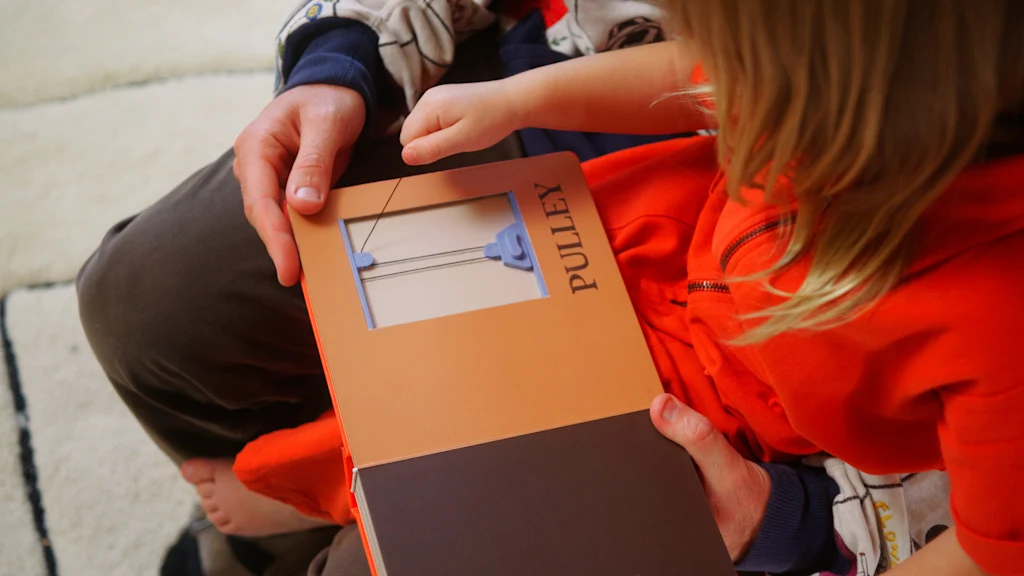
How do you explain the laws of physics to a toddler?
A new children’s book, titled Simple Machines Made Simple, wants to demystify mechanical engineering for kids as young as a year old. It recently beat its Kickstarter goal by 700%—raising more than seven times its target. It will be available to ship early next year.
But Simple Machines Made Simple isn’t your typical picture book. Instead of drawings, the book features working models that kids can interact with, like spinning a wheel, sliding a knob up an inclined plane, and pushing a wedge into a block that splits into two. The kids may not graduate with a physics degree, but they might come away with a curiosity for the world around them. “Maybe they can’t explain it, but it starts to build intuition for how things work,” says Chase Roberts, a computer engineer who created the book.

Roberts, who spent the better part of a decade making phone apps, moved away from technology in 2021 to more tangible objects that can teach kids basic and useful skills. His first book, Computer Engineering for Babies (2021), used buttons and LEDs to explain to kids how computers “think” by teaching them basic logic gates like NOT, AND, OR, and XOR. The sequel, Computer Engineering for Big Babies (2023), swapped buttons for rocker switches and introduced more LEDs to challenge slightly older readers.
Roberts was planning a third sequel when he caught one of his three young children catapulting cereal off a spoon one morning. The idea for a book about mechanical engineering was born.

Book vs. machine
Sooner or later, our children will find out they can learn how something works by simply prompting ChatGPT or asking Gemini. What, then, is the point of teaching them how pulleys or wedges or even computers work? For Roberts, it’s about instilling fundamental skills from a young age. “We still learn to add and multiply even though we have calculators,” he says. “My kids in elementary school are learning how to multiply and divide on paper because we’ve decided it’s still important.”
To help both kids and parents look for “simple machines” in their everyday lives, Roberts has included examples for each machine in the book. Wheels appear in scooters, roller skates, and pizza slicers. Escalators and ramps are nothing but inclined planes. Shovels, knives, and axes act as wedges.
“Being able to play with these machines, all together in one place, we’re giving it a name and drawing attention to how magical they are,” he says. “It’s pretty amazing that we figured out these ways to leverage the world. There’s this [lever] you can’t turn, but if we add a huge rod to it, it’s not that hard.”

Making engineering fun
Roberts’s books appear to have struck a chord. “I get emails from people all the time saying ‘This is my daughter’s favorite book,’” he says, even though his actual target audience is less the kids but the adults who buy the books for them.
More often than not, his target audience is made up of engineers. In fact, Computer Engineering for Babies went viral after Roberts posted about the book on Reddit, specifically the Arduino subreddit, where people discuss everything related to the popular microcontroller that Roberts used in his first book. “I thought, Those are my people. If anybody’s going to appreciate it, it’s these guys.”
According to Roberts, his books tend to resonate with engineers not only because they speak the same language but also because they manage to repackage complex systems into something fun that engineers can finally share with their kids.
As it turns out, the best way to teach kids how things work is to play with them.